The new 7 series chipsets
Earlier this month Intel began the launch of their new platform, in the shape of the new 7 series chipsets. This was due to that the launch of the Ivy Bridge were planned to be around April 8, along with the new motherboards. The manufacturers have had their new motherboards finished for a long time, and was eager to launch their motherboards even despite that Intel wasn’t ready with their new processors. The fact that the new motherboards were fully compatible with Sandy Bridge made it possible for the manufacturers to get thumbs up to launch the motherboards in advance of the new architecture.
LGA1155 also means support for Sandy Bridge
Launching new motherboards without associating processors is a bit backwards. But the explanation lies in that the new 7 series is not that much different from the previous generation 6 series chipsets. Most important is that they use the same LGA1155 socket, which means support for Sandy Bridge processors. The new generation of motherboards is supposed to work just as good with Sandy Bridge as with Ivy Bridge, but there’s several functions that’s not supported in Sandy Bridge.
This is also the reason that we on Nordichardware chose to wait with our motherboard reviews until we’ve had the new Ivy Bridge processors in our hand. The new 7 series chipsets really deserves to stretch it’s legs, and within a near future they will, since we’re working on a review which will include motherboards from several different manufacturers.
The power of three – PCI Express 3.0, USB 3.0 and three monitors
As we mentioned Intel based their new chipset series on the same foundation as the previous 6 series. But there are a couple of bigger news, or to be exact three big news. Intel’s new chipsets finally supports the new USB 3.0 standard for multiplied file transfer speeds to compatible USB devices. As always you need SSD based USB devices to reach the highest transfer speeds, but now there’s at least four USB 3.0 ports integrated directly in the chipset.
PCI Express 3.0 gives us double the bandwidth per datachannel which also is a new function in the chipset. Especially to the users who chose configurations with multiple graphics cards where physical PCIe x16 slots can be forced to use more narrow data paths at x8 or even x4, which with PCI Express 3.0 still will deliver a substantial bandwidth.
Last but not least the Panter Point chipset also comes with support for three displays at the same time. This is a feature which is directly connected to the new graphics circuit in the Ivy Bridge architecture, and therefore will only work with the new generation of Core processors. Sandy Bridge is thus (still) limited to support two displays simultaneously.
| Chipset | Z77 | Z75 | H77 | Z68 | P67 | H67 | X79 (LGA2011) |
| Intel Smart Response Technology | Yes | No | Yes | No | Yes | ||
| Support for overclocking |
Yes | No | Yes | No | Yes | ||
| Support for built-in graphics |
Yes | No | Yes | – | |||
| Display support |
3 | 2 | – | 2 | – | ||
| USB 2.0 (USB 3.0) |
14 (4) | 14 | |||||
| SATA 3.0 (6.0) Gb/s | 6 (2) | ||||||
| PCI Express 2.0 |
8 | ||||||
| Thunderbolt | 1 | – | |||||
| Official PCI Express 3.0 support |
Yes | No | |||||
| DDR3 | 2 800 MHz | 2 133 MHz | |||||
| TDP | 6,7W | 6,1W | 7,8W | ||||
Like the table reveals Intel has a few additional opimizations in their new chipset series. First of all they have included better support for memory in the platform. Motherboards with the 7 seriers chipsets support DDR3 speeds of up to 2 800 MHz, and also the more power efficient DDR3L standard.
Exciting is also support for the new high-speed interface Thunderbolt. With data rates up to 10 Gbps Thunderbolt is best known for its integration into Apple’s MacBook family, but now Intel’s technology also comes to the PC platform on a broad front. The controller circuit is built-in to the Panter Point chipset, and all the 7 series chipsets is prepared to connect 4 PCI Express channels to an external Thunderbolt circuit if the motherboard manufacturer deems appropriate – for a licensing fee.
We will do a follow up with reviews of Intel’s new processor architecture on the new 7 series chipset, but also closer investigations of the motherboards themselves. So keep your eyes open for more reports on Intel’s new platform.



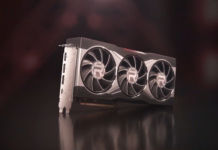







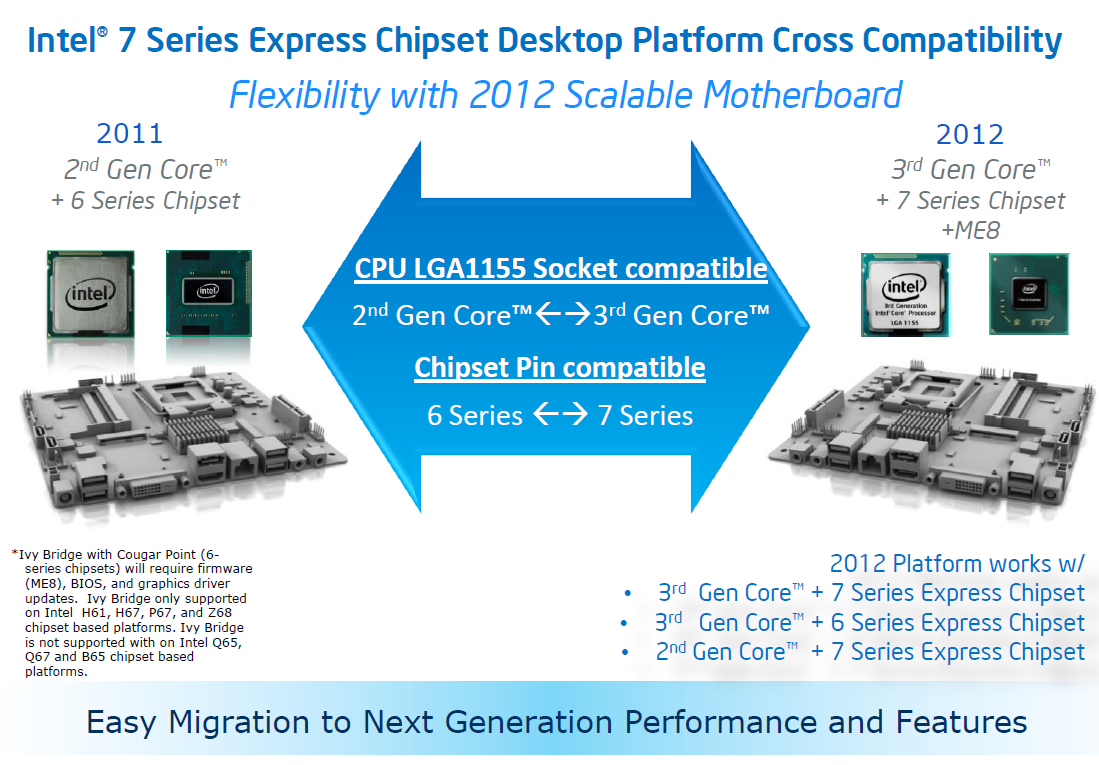
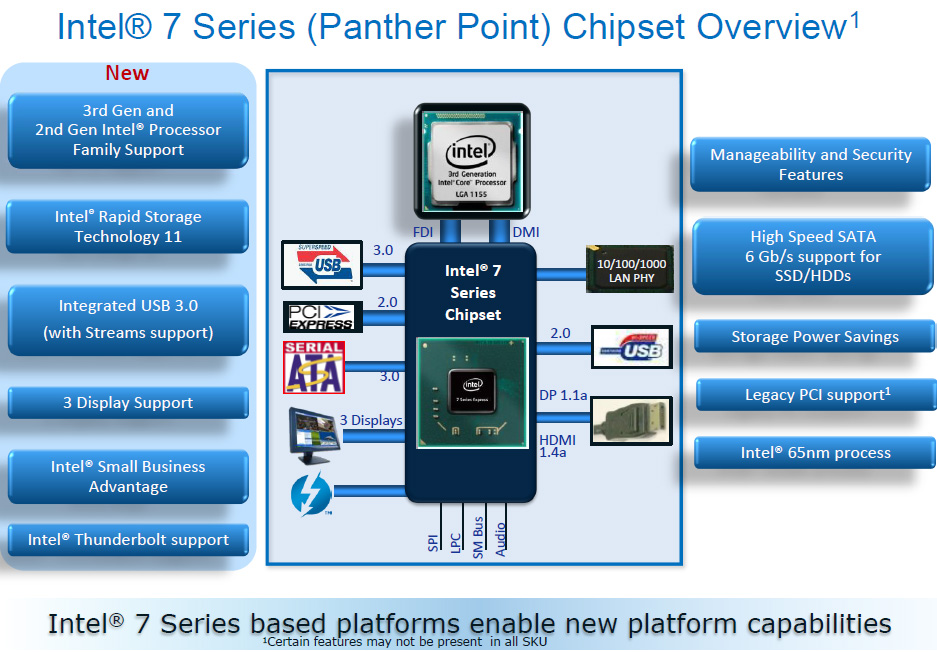

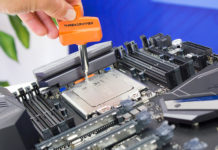
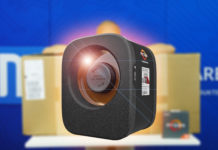




Great review guys, i would really love to see you do much more of them =]
A really great review, good job. Waiting to get my hands on it… but don’t know when it will arrive in Brazil
Glad you liked it
We hope the new translators will have time for more of these.
You used DDR3-1333 for AMD APU when it’s known that those processors need faster RAM to reach top performance, unlike Intel’s which don’t scale up accordingly. As it is, this is a very Intel-biased review.
[quote name=”Taki R”]You used DDR3-1333 for AMD APU when it’s known that those processors need faster RAM to reach top performance, unlike Intel’s which don’t scale up accordingly. As it is, this is a very Intel-biased review.[/quote]If you’re talking about CPU performance, the difference is very much negligible. I can agree however if we’re talking GPU-performance, where may I add, even Ivy Bridge HD 4000 benefits from higher RAM-clocks as well so it’s pretty much apples-to-apples in that regard. We will be revising our testing methodology during the summer, so we’ll be taking all of these things into close consideration… Läs hela »
It seem Intel will beat AMD more with this line of new generation processor. It is faster and consume less power than sandy bridge and trinity. Core per core / clock per clock basis.
I really like to know though the performance and efficiency compare to AMD trinity.
É realmente incrível todo esse progresso/evolução da INTEL.
BRASIL – CRATO – CEARÁ
É realmente incrível todo esse progresso/evolução da INTEL.
BRASIL – CRATO – CEARÁ
What happens if I put a 125w TDP CPU on a 95w motherboard? If I have a quad-core CPU and disable 2 cores will my CPU fit in the 95w TDP?